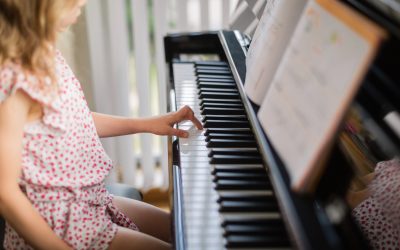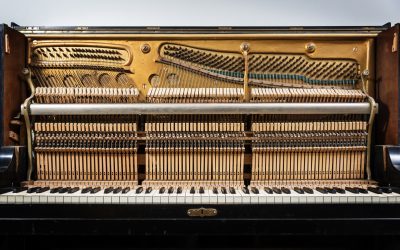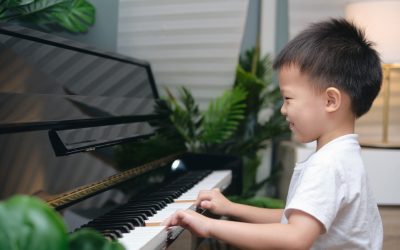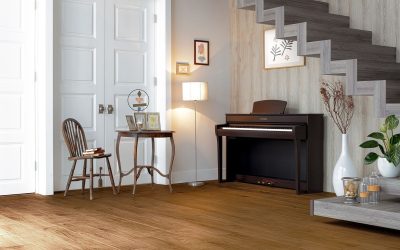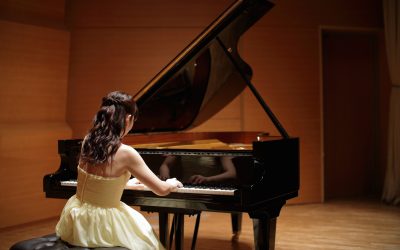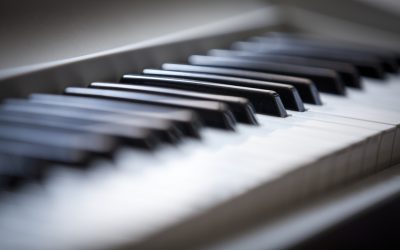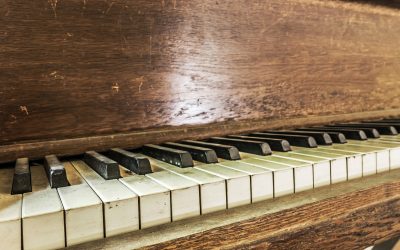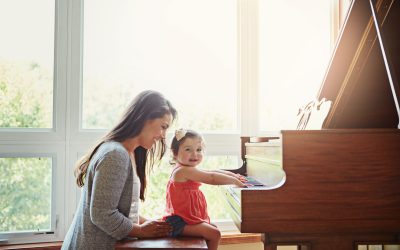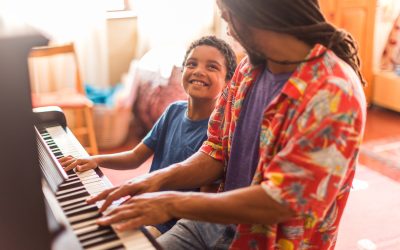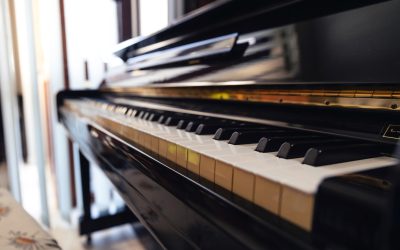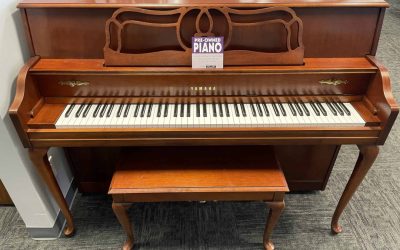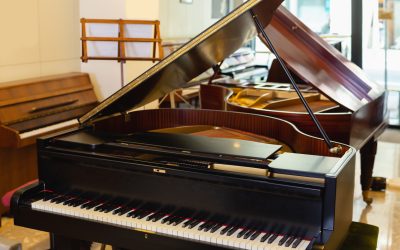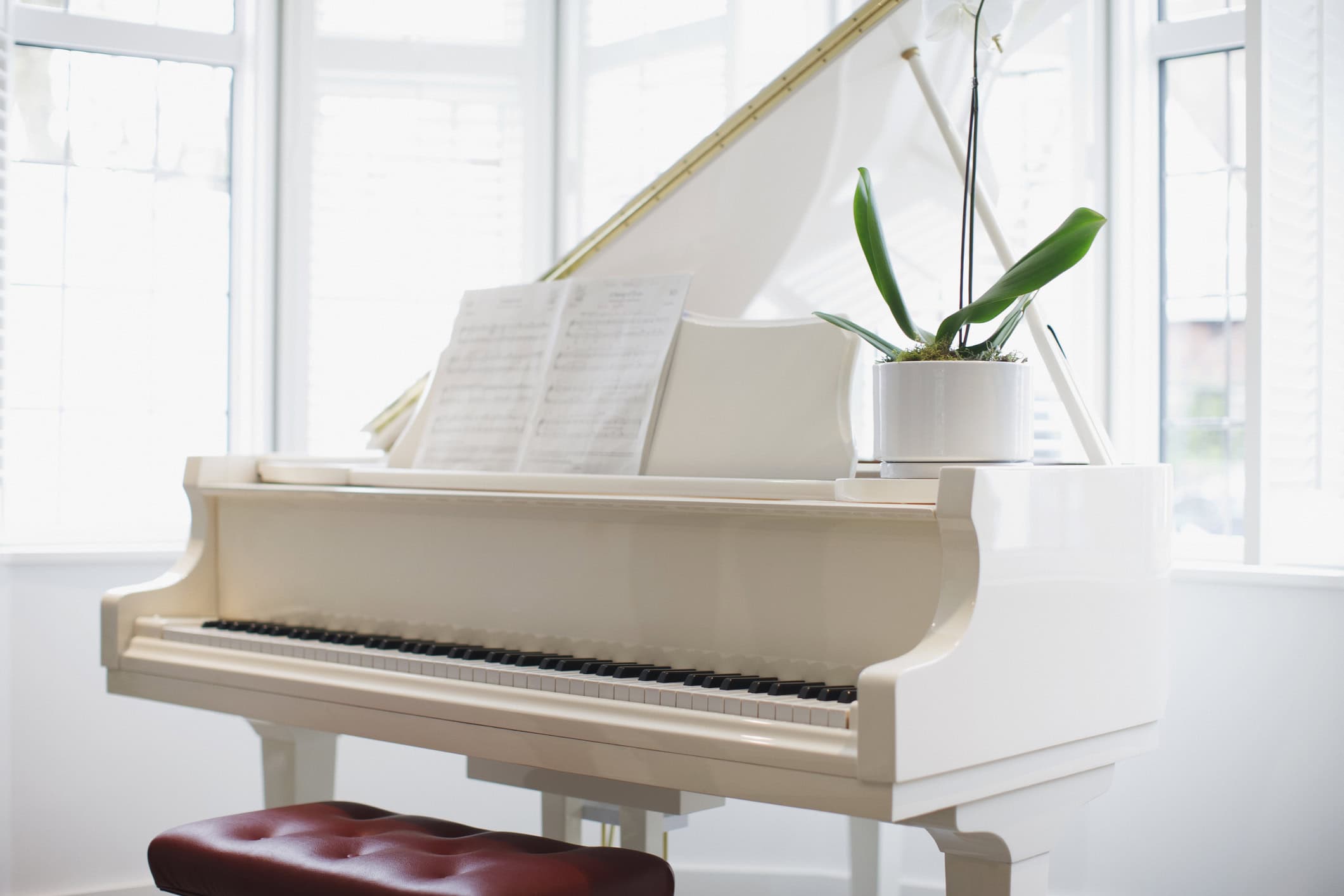
Grand pianos and baby grand pianos are the epitome of a classic icon in music. With their elegant curves, propped lids, and exposed strings and soundboard, their beauty is often one of the first things people think of when considering a grand or baby grand piano.
In this article, we discuss the difference between grand pianos and baby grand pianos, how they cater to different spaces, budgets, and musical needs, as well as comparing popular grand and baby grand piano brands.
Differences Between Grand Pianos and Baby Grand Pianos
There are five primary differences between grand pianos and baby grand pianos: their size, sound quality, volume, action, and price. Baby grand pianos are smaller than grand pianos, maxing out at about 5 feet 3 inches in length. The larger size of grand pianos tends to produce a better sound quality, volume, and piano action. Conversely, the smaller size of baby grand pianos typically results in a less expensive cost compared to a grand piano.
Read more about the specific differences between grand and baby grand pianos below:
Size and Space
The most notable difference between grand pianos and baby grand pianos is their size. Grand pianos typically range from about 5 feet 7 inches to over 9 feet in length, while baby grand pianos are smaller, usually between 4 feet 5 inches and 5 feet 3 inches. This size difference significantly impacts the amount of space each piano occupies as well as string length, soundboard size, and more.
Sound Quality and Volume:
Due to their larger soundboards and longer strings, grand pianos generally produce a richer, more resonant sound. The sound of a grand piano is especially prized by experienced musicians who find the tone of baby grand pianos to be thin in comparison. The longer strings allow for a greater range of dynamics and tonal expression. For experienced pianists, this can be an important difference to note in baby grand and grand pianos. For advanced players, the ability to produce the softest pianissimos and most powerful fortes is integral to their artistic expression. In contrast, baby grand pianos, while still offering a beautiful sound, have a slightly more limited dynamic range due to their smaller size.
Action and Touch
Both grand pianos and baby grands feature a similar action mechanism, especially when comparing similar brands and model qualities. However, the longer keys and greater key leverage in a full-sized grand piano provide an edge in touch sensitivity and control, which can be the deciding difference between a baby grand piano and grand piano to an experienced pianist. For advanced players, the ability to play the most poignant staccatos and melodic legatos is important when choosing a piano. These players are often more satisfied with a full-sized grand piano or higher-quality baby grand piano that will accommodate the nuances of their playing.
Price
Because of the smaller size of a baby grand piano, they are typically less expensive than a full-sized grand piano. This is especially true when comparing similar brands and model qualities. This is because baby grand pianos typically require less materials, lower manufacturing time, and decreased shipping weight compared to full-sized grands.
Baby Grands vs. Full-Sized Grands: Quality Matters
A high-quality baby grand piano may be priced similarly to a low-quality larger grand piano, but in this case the difference would be more than in just the size. The quality of a piano, that is, the materials, workmanship, and mechanics, have an immense impact on the touch, feel, tone, and longevity of the instrument. These are determined not only by the piano brand, but also by the model series, as some piano brands offer a budget-friendly series compared to their higher-quality series. In most cases, it’s a better purchase and investment to get a good brand, higher-quality piano in a smaller size than to get a larger piano that is low-quality.
Why Choose a Grand Piano vs a Baby Grand Piano?
- Venue and Use: The choice between a grand and a baby grand often depends on the intended use and venue. Full-sized grand pianos are ideal for large spaces like concert halls and large living rooms, thanks to their superior acoustics. Baby grand pianos, however, are more suited for smaller spaces such as homes or practice rooms, where space is a consideration.
- Budget: Budget also plays a crucial role. Grand pianos, with their larger size and superior sound quality, are generally more expensive than baby grand pianos. Buyers must consider both the initial purchase cost and ongoing maintenance expenses.
- Aesthetic and Prestige: Aesthetically, both piano types are striking, but the grandeur of a full-sized grand piano often carries a certain prestige. For many, owning a grand piano is as much about the musical possibilities as it is about the statement it makes.
Typical Price Differences of Grand Piano vs. Baby Grand Piano
The price of a grand piano versus the cost of a baby grand piano can vary widely based on brand, model, materials, and construction quality. Generally, a baby grand piano can start around $10,000 for a lower-end model and can go up to $80,000 for high-end models. Full-sized grand pianos, on the other hand, often start at around $20,000 and can reach upwards of $200,000 or more for top-of-the-line concert grands.
Buying a Used Grand or Baby Grand Piano
Buying a used baby grand piano or full-sized grand piano can be a great way to extend your budget to access a piano that is larger and higher quality than what would be in your budget for a comparable new piano.
Here are some tips for shopping for a used grand or baby grand piano.
- Educate yourself about reputable piano brands and specific models known for durability and performance. Yamaha, Steinway, Kawai, and Bösendorfer are among the respected brands. Knowing about specific models helps in assessing the typical market value and common issues if any.
- General Condition: Check for any signs of wear or damage. Look for cracks in the soundboard, frame, and bridges, as these can be expensive to repair.
- Keys: Play every key to ensure they all produce sound and feel consistent when pressed. Play them across a breadth of dynamics from very soft to very loud, then press each key quickly multiple times to test the speed and quality of their action, and finally hold each note to hear its resonance.
- Pedals: Test all pedals to make sure they function properly.
- Look under the lid: Look for rust on the strings or loose tuning pins, which can be a sign of neglect or age. Also look for a cracked or warped soundboard, which can indicate water damage or an unregulated environment which can significantly impact the quality and value of the piano.
- Cabinet: While cosmetic issues may not affect the sound of a used grand piano or baby grand piano, they can indicate how well the piano has been cared for.
Our Favorite Grand and Baby Grand Pianos
Yamaha is one of the most respected piano manufacturers globally, known for its quality craftsmanship and technological innovations. The Yamaha C3X Grand Piano is one of the most popular full-size grand pianos among families. Here’s why it stands out:
- The Yamaha C3X measures approximately 6 feet 1 inch, making it large enough to deliver rich, powerful sounds but still compact enough to fit comfortably in many home environments. This size strikes a good balance between performance and spatial practicality.
- The C3X model is well-regarded for its excellent sound quality, which is characterized by clear, resonant tones and balanced acoustics. Its longer strings compared to smaller grand or baby grand pianos allow for more expressive play and dynamic range, which can be very satisfying during family music sessions or performances.
- Yamaha pianos are known for their durability and reliability, and the C3X is no exception. It is built to last, which is crucial for families looking for an instrument that can endure frequent use and still maintain its musical integrity over the years.
- Yamaha pianos hold their value quite well, making the C3X a good investment. It retains a significant portion of its value over time, especially if maintained properly, which can be a key consideration for families making a significant financial commitment.
- The Yamaha C3X also has a classic grand piano aesthetic that adds elegance to any room. Its presence enhances the visual appeal of a space, making it not just a musical instrument but also a piece of decor.
The Yamaha GB1K, one of the most popular baby grand models, offers a good balance of performance and affordability. It is highly regarded for its quality and durability, making it a favorite among educational institutions and individual purchasers alike.
Both Yamaha models incorporate Yamaha’s advanced scale design and precision-crafted action mechanism, which provide exceptional musical performance and playability.
Final Thoughts
When choosing between a grand piano and a baby grand piano, considerations of space, budget, sound quality, and intended use are paramount. While grand pianos are ideal for large spaces and professional use due to their superior sound and touch, baby grand pianos offer a compromise between space economy and musical quality, suitable for smaller venues and private homes. Brands like Yamaha provide a range of models that cater to various needs and budgets, ensuring that there is a perfect piano for every pianist and every setting.
Are you interested in exploring grand pianos or baby grand pianos for sale? Click the buttons below to view our online inventory!
About the Author
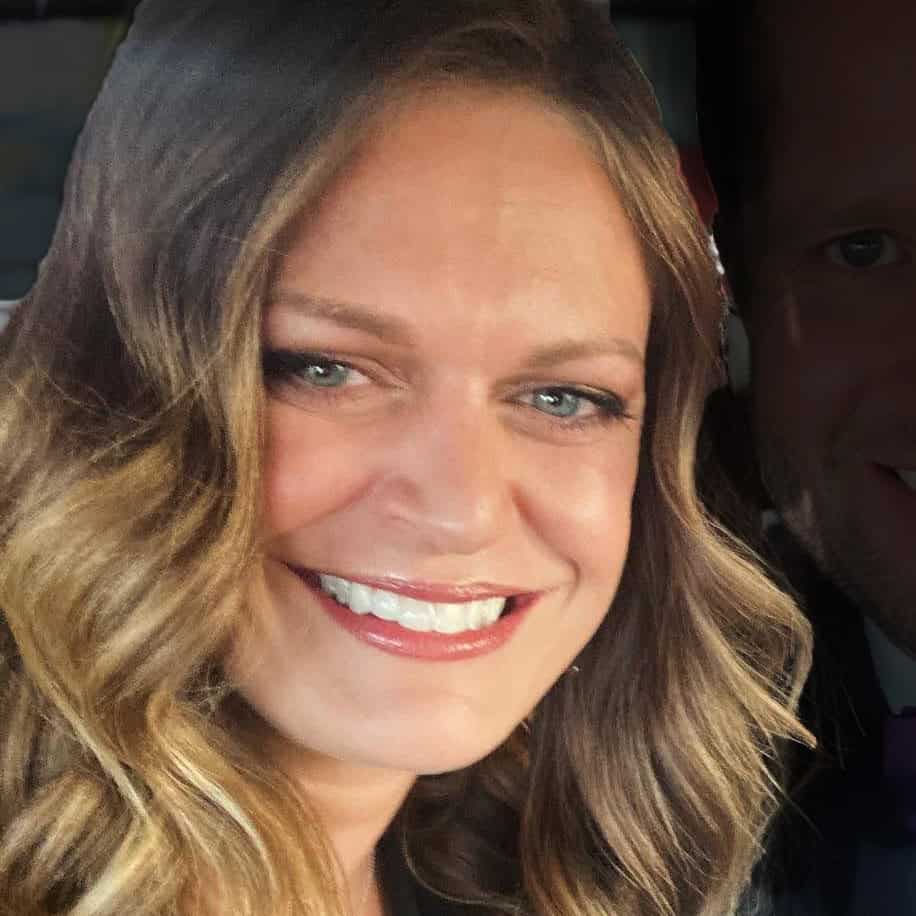
Mikelle Despain
Piano Insights Author
Mikelle is a classically trained pianist and piano teacher who has been in the piano retail industry for over 20 years. Her dream piano is a Yamaha S5X. She currently provides expert insights for Piano Gallery to share information and advice for buying, playing, and enjoying the piano. When she's not writing or playing piano, she's spending time with her four kids, tending her vegetable garden, boondock camping, hiking, or cooking for friends.
You may also be interested in...
How to Keep Your Child Motivated to Practice the Piano
You picked the perfect piano, hired a highly-rated piano teacher, and bought your child a stack of books to learn how to play the piano—but one thing’s missing: their motivation to practice. Even if a child is super excited to learn to play the piano, there are some...
Top Health Benefits of Playing the Piano
There are many reasons people choose to play the piano—for pleasure, skill development, stress relief, and more. In this article, we explore the health and wellness benefits of playing the piano. How Playing the Piano Supports Health & Wellness Playing the piano...
Upright vs. Grand Pianos: Differences & Benefits
The choice between an upright or grand piano usually comes down to size, price, aesthetic, or all three. However, for those piano buyers who have wiggle room (literally and figuratively) in choosing a piano, the conversation about the difference between an upright and...
Yamaha U Series Upright Pianos
Yamaha is a world-renowned name in pianos because of their quality, reliability, and beauty. With a rich history of piano craftsmanship beginning in 1887, the heritage of Yamaha has made it one of the most respected names in the industry. About Yamaha’s U Series...
Yamaha Clavinova Digital Pianos: A Complete Guide
The Yamaha Clavinova is a world-renowned digital piano manufactured to emulate the touch, feel, and expression of an acoustic grand piano while offering a wide range of additional features, technology, and capabilities. In this article, we answer some of the most...
Ideas for Planning an Engaging Piano Recital
Piano recitals, especially for younger students, often have a reputation of being a little blasé. However, with the right preparation and innovation, a piano recital can be a captivating, elevated experience for its attendees. 10 Tips for a More Engaging Piano Recital...
Understanding the Difference Between a Keyboard and a Digital Piano
If you're new to the world of music or considering an upgrade from your current instrument, you might be wondering about the differences between a keyboard and a digital piano. While both instruments share similarities, they also have distinct characteristics that...
How Digital Pianos Can Enhance Music Education
For new or experienced piano students, a digital piano can be an exceptional tool for enhancing music education. This is especially true for new or young piano students. In our blog “Best Pianos for Beginners,” we further discuss this fact as we discuss our choice of...
How to Clean and Maintain Your Yamaha Clavinova
While Yamaha Clavinova digital pianos require less maintenance than digital pianos as they don’t require annual tuning, regular cleaning and maintenance can help extend the life and performance of a Clavinova. In this step-by-step guide, we walk you through the...
About Free Pianos: What to Know Before Accepting a Free Piano
If you are in the market for a pre-owned piano, you may have seen many classified ads for pianos people are giving away for free. But why are there so many free pianos and should you be wary of accepting a free piano from a friend, family member, or neighbor? Why Are...
Is Having a Piano in the Home Good for Kids?
We already know that there are several benefits to kids for learning to play the piano, but what about just having a piano in the home? For children who are still too young to play the piano or for those who have chosen to pursue other passions, there are still...
How to Encourage Piano Playing in Your Home
Every once in a while we encounter someone who would love to buy a new piano for their home–but is worried it won’t get played often enough to make the purchase worth it. In this article, we discuss some of our favorite tips for encouraging piano playing in your home....
How to Spot a Quality Piano: A Beginner’s Guide
If you’re looking to buy a piano, whether new or used, you may be wondering how to ensure your purchase is of good quality. After all, purchasing a piano can be a significant investment, depending on whether you’re purchasing a beginner piano or an advanced piano, and...
Used Yamaha Pianos: What to Know
Used Yamaha pianos are among the fastest-selling brands of used pianos. Because of their material and manufacturing quality as well as global brand recognition, Yamaha pianos are preferred by individuals looking for a used piano they can rely on. Yamaha Pianos Their...
Why Buy a Used Piano?
If you’re interested in purchasing a new piano, you may be considering the benefits of a used piano compared to a new piano. Used pianos can be a tricky purchase if you don’t know what you’re looking for, especially if you’re buying from a private party that may not...
